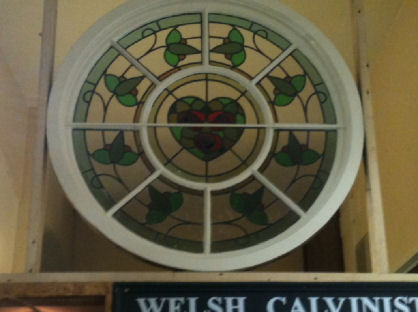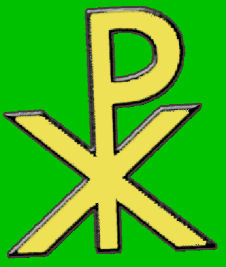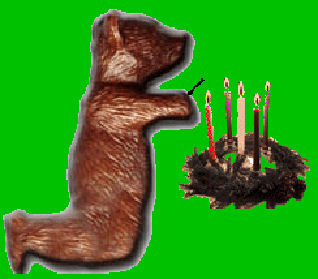Obituary
We are sorry to report that Mrs Mary Hunt recently passed away. Ms Janet Preece also died recently. It is a sad time for the Museum to have lost a number of its supporters over the last few months.
Diary Dates
Ongoing – WW1 Exhibition in the Museum
Tuesday 1st December – All day Christmas Fayre to coincide with Winterfest
Friday 11th December – Gwent Archives Christmas Lecture (Aneurin Bevan), free, ring 01495 353363 for details
November 100 Club
No. 90 Graham Webb £20
No. 83 Anne Howells £10
No. 10 Hazel Robinson £5
Fundraising November - tba
Annual General Meeting
This was held on Monday 9th November and quite a few people turned out despite the bad weather. It was an opportunity to run through what has been happening over the last year and it was encouraging to learn that visitor numbers were up. The Ash’s shop window display proved popular and having moved our own museum shop into that space, it was encouraging to know that takings were up on the previous year. We still need to work hard to raise funds to keep our museum going and carry out necessary conservation work, and we are grateful to all those individuals who help throughout the year and to those individuals and organisations who have helped with various projects such as our wonderful Welsh Chapel window.
Annual Subscription - £6
Annual subscriptions are now due so please call at the museum to pay or send in a cheque made payable to Abertillery & District Museum Society. This is your way of showing your commitment to our museum and its dedicated band of volunteers so please be sure to renew your membership. If you can encourage someone else to join, all the better.
Christmas Fayre
Last year this was arranged to coincide with Winterfest and we are doing the same again this year so please put the date of Tuesday 1st December in your diary and come along to help and to spend your money! Bring along family and friends and generally spread the word. This will be an all day and into the evening affair (9pm) and so we will need quite a few people throughout that time to help man not just the stalls but the museum itself as there will be visitors looking at the displays.
Christmas Jokes
What do they sing at a snowman's birthday party?
Freeze a jolly good fellow.
What do you get if you cross Santa with a duck?
A Christmas Quacker!
“The Satchel”
These days even the youngest schoolchildren seem to wear a backpack to school. Skip back fifty five years and my recollection is that you didn’t take a bag to school on a regular basis until you went to ‘the big school’ – in my case ‘The County’. That meant getting a satchel. In case anyone really young is reading this, a school satchel was made of leather and comprised a large main compartment with a smaller pocket stitched to the front, and with a luggage label type slot for a card with your name. There were usually two buckles to fasten the bag shut. Most pupils in Abertillery went to Ash’s for their satchel and expected it to last until they finished school. The design was essentially the same and the only differences were where the shoulder strap was attached and the colour. The shoulder straps could either be attached at each side of the satchel, or fixed to the back. It was only when you already had your satchel and had started using it, that you realised the back attachment was a much more ‘cool’ arrangement, allowing the bag to swing around your hips. Most satchels were tan in colour and it was surprising how many subtle variations of tan you could get. There was also a sort of dark donkey brown – clearly not a popular colour as not many chose one of those. The new satchel was a clear giveaway that you were a first-former and most soon tried to ‘age‘ their satchels, the most popular method being to drag it face down along the road to rough it up a bit. At break time there would be tens of satchels dumped in the hall but somehow it was easy enough to pick out your own. There was the particular colour tan, the scratches, the ink stains, the rubber band holding the flappy length of shoulder strap in place – all little things saying ‘this is mine’. What was in the satchel? Text books, exercise books, pencil case, ruler, trig set, bottle of ink, glasses case, hairbrush, money, possibly a girls’ magazine for break. The satchel invariably weighed a ton and the leather strap was hard on a skinny shoulder. The padded straps of today’s backpacks are surely a more comfortable option but were unheard of in my day. Rucksacks then were for hiking and camping and as they also usually had narrow leather shoulder straps they wouldn’t have been any improvement on the satchel.
Jen Price
How do snowmen get around?
They ride an icicle
What is the best Christmas present in the world?
A broken drum, you just can't beat it!
The New Chapel Window
I don’t mange to call at the museum as often as I’d like, but recently I made a point of going to see the Chapel Window Display. What a beautiful window and what a wonderful display – I honestly think it is one of the best exhibits in the museum and we have the window thanks to Don and Peggy Bearcroft’s diligence and persistence. It is very much to their credit that they noticed and remembered the window in the first place and that they then left no stone unturned in seeking to secure its careful removal and renovation. It was renovated by Hugh Meller Haley BAFR of Phoenix Conservation, Carmarthen funded by Welsh Government and Federation of Museums & Art Galleries of Wales.
Well done to you both! If you haven’t yet seen the window, please call at the museum, it is well worth a visit.

However often you visit the museum, there is something new to be seen – sometimes a brand new display, sometimes just noticing something you hadn’t seen before. Why not pop in regularly? You can be sure of an interesting visit, a warm welcome, a shop to browse, and refreshments in the café.
Poetry Corner
THE TRUE PRICE OF COAL
In June 1960 on the 28th day
45 miners were taken away
A memorial is now standing
To remember them all
An annual service is held
At St. John's Parish Hall
Gone but not forgotten
We can all say with pride.
When we look back to that day,
How tragically they all died
written by BRIAN INCH, July 1960
George Parry
Close to the town centre of Ebbw Vale is a home for the elderly called the George Parry Residential Home.
George Parry was my Great Great Grandfather and was one of the steel boffins at Ebbw Vale and Merthyr Ironworks in the early 19th century. George was a scientific chemist and had his own laboratory on site at Ebbw Vale Steelworks.
Each morning it was the job of some of some of the workers to clean out the bottom of the large furnaces used in melting the raw iron. One of George Parry's responsibilities was to inspect the furnaces before they could be used again. During one of these inspections he discovered small amounts of a shiny metal among the cold ashes and he realised that they were forming in the furnace where the temperature was at its highest point.
After many experiments a new furnace was developed in which steam was used to the raise the temperature in the furnace and the making of steel was discovered by this process. Word of this discovery soon spread among the iron masters of the time and a man by the name of Bessemer came over from America and offered a large sum of money to buy the patent of his new steam process for making steel. Parry was paid £10,000 and the steel company in Ebbw Vale was paid £30,000 (Wikepedia). The patent was taken back to America where it became known as the Bessemer Steel Process. Steel is still made all over the world today using the process discovered by George Parry.
Parry had a daughter Annie who was also an industrial chemist and who worked with her father in the laboratory at Ebbw Vale Ironworks. Annie was my Great Grandmother. She married a man from the Abercarn area whose surname was Lloyd. They had four sons, one of whom was my Grandfather, William Lloyd. William was Chief Engineer at Llanhilleth Colliery and his older brother Henry Lloyd drew the plans for the first deep pit shaft of Llanhilleth Colliery.
It is apparent from this history that there is a lot of industrial tradition in my family - a fact of which I am very proud.
Margaret Evans
Robins
This feisty little bird has more than once been voted Britain’s favourite bird. They symbolise wintry weather and Christmas in particular but did you know that some of them migrate to Spain, Portugal and North Africa for the winter?
Christmas Books
I’m not sure that you can beat the old favourites such as A Christmas Carol by Charles Dickens. Ebenezer Scrooge is a bitter and miserly moneylender whose partner, Joseph Marley has died. He pays his employee Crachit very little and does not celebrate Christmas. Some years later he is visited by the ghost of Marley, wearing heavy chains, who warns Scrooge that he needs to change and that spirits will come to guide him. Scrooge is visited by the Ghost of Christmas Past reminding him how he ended up as a greedy miser. Next, Scrooge meets the Ghost of Christmas Present who shows him happy family scenes and the privations at the Crachit family home. Finally, Scrooge meets the Ghost of Christmas Future seeing the death of the Crachit son (Tiny Tim), his own death, and his wealth being distributed to the poor. Scrooge vows to make amends and lives out his remaining years as a kindly benefactor, embodying the spirit of Christmas.
Another favourite is The Little Fir Tree by Hans Christian Anderson. This is a very sad tale of a young fir tree who, instead of being happy as a beautiful young tree, longs to be taller and older. One day he is cut down for use as a Christmas tree and is proud and happy to be decorated and celebrated. How different a life the following day when he is thrown out, left to wither and finally chopped up and burnt. The moral? The grass isn’t always greener on the other side of the hill.
I love reading and come from a family of avid readers. As a child there were always lots of books in the house. I made good use of the public library but also invariably had books at Christmas. As a young child these were illustrated story books, moving on to Enid Blyton adventure stories and progressively more grown up books. Annuals have stood the test of time and still seem to be popular. I had annuals of the girls’ comics I read such as ‘Bunty’ or ‘Girl’. I remember I also had, for several years, a film annual. This was full of black and white photographs of glamorous film stars – wonderful stuff!
Jen Price
What did Adam say to his wife on the day before Christmas?
It's Christmas, Eve!
Why did no one bid for Rudolph and Blitzen on eBay?
Because they were two deer!
What did the sea say to Santa?
Nothing! It just waved!
Who is Santa Claus married to?
Mary Christmas!
Museum Matters
Christmas, Do you know?
The Tradition of Advent
Advent is the period of four Sundays and weeks before Christmas (or sometimes from the 1st December to Christmas Day!). Advent means 'Coming' in Latin. This is the coming of Jesus into the world. Christians use the four Sundays and weeks of Advent to prepare and remember the real meaning of Christmas.
There are three meanings of 'coming' that Christians describe in Advent. The first, and most thought of, happened about 2000 years ago when Jesus came into the world as a baby lived as a man and died for us. The second can happen now as Jesus wants to come into our lives now. And the third will happen in the future when Jesus comes back to the world as King and Judge, not a baby.
There are several ways that Advent is counted down but the most common is by a calendar or candle(s). The most common ones are made of paper or card with 25 little windows on. A window is opened on every day in December and a Christmas picture is displayed underneath. When they were first made, scenes from the Christmas Story and other Christmas images were used, such as snowmen and robins, some have chocolate under each window, to make every day in December that little bit special! Peggy made one using material filling the pockets with chocolate.
An Advent Crown is in the form of candles that are used to count down Advent. These are often used in Churches rather than in people's homes. The crown is often made up of a wreath of greenery and has four candles round the outside and one in the middle or in a separate place. One candle is lit on the first Sunday of Advent, two are lit on the second Sunday and so on. Each candle means something. The first represents Isaiah and other prophets in the bible that predicted the coming of Jesus. The second represents the bible. The third represents Mary, the mother of Jesus. The fourth represents John the Baptist, Jesus' cousin, who foretold the coming of Jesus. The middle or separate candle is lit on Christmas Day and represents Jesus, the light of the world.
Christmas or Xmas? Christmas is also sometimes known as Xmas. Some people don't think it's correct to call Christmas 'Xmas' as that takes the 'Christ' (Jesus) out of Christmas. (As Christmas comes from Christ-Mass,  the Church service that celebrated the birth of Jesus.) Greek language and alphabet, the letter that looks like an X is the Greek letter chi / X (pronounced 'kye' - it rhymes with 'eye') which is the first letter of the Greek word for Christ, Christos. early church used the first two letters of Christos in the Greek alphabet 'chi' and 'rho' to create a monogram (symbol) to represent the name of Jesus. This looks like an X with a small p on the top: Xmas can also mean Christmas; but it should also be pronounced 'Christmas' rather than 'ex-mas'!
the Church service that celebrated the birth of Jesus.) Greek language and alphabet, the letter that looks like an X is the Greek letter chi / X (pronounced 'kye' - it rhymes with 'eye') which is the first letter of the Greek word for Christ, Christos. early church used the first two letters of Christos in the Greek alphabet 'chi' and 'rho' to create a monogram (symbol) to represent the name of Jesus. This looks like an X with a small p on the top: Xmas can also mean Christmas; but it should also be pronounced 'Christmas' rather than 'ex-mas'!
The symbol of a fish is sometimes used by Christians (you might see a fish  sticker on a car or someone wearing a little fish badge). This comes from the time when the first Christians had to meet in secret, as the Romans wanted to kill them (before Emperor Constantine became a Christian). Jesus had said that he wanted to make his followers 'Fishers of Men', so people started to use that symbol. When two Christians met, one person drew half a basic fish shape (often using their foot in the dust on the ground) and the other person drew the other half of the fish. The Greek word for fish is 'Ikthus' or 'Ichthys'. There are five Greek letters in the word. It can also make up a sentence of Christian beliefs 'le-sous Christos Theou Huios So-te-r' which in English means "Jesus Christ, Son of God, Saviour". The second letter of these five letter is X or Christos!
sticker on a car or someone wearing a little fish badge). This comes from the time when the first Christians had to meet in secret, as the Romans wanted to kill them (before Emperor Constantine became a Christian). Jesus had said that he wanted to make his followers 'Fishers of Men', so people started to use that symbol. When two Christians met, one person drew half a basic fish shape (often using their foot in the dust on the ground) and the other person drew the other half of the fish. The Greek word for fish is 'Ikthus' or 'Ichthys'. There are five Greek letters in the word. It can also make up a sentence of Christian beliefs 'le-sous Christos Theou Huios So-te-r' which in English means "Jesus Christ, Son of God, Saviour". The second letter of these five letter is X or Christos!
Boxing Day - the Day after Christmas! During the Middle Ages it was the day when the alms box, collection boxes for the poor kept in churches, were traditionally opened so that the contents could be distributed to the poor. It was also traditional that servants got the day off to celebrate Christmas with their families on Boxing Day. Before World War I, it was common for working people (such as milkmen and butchers) to travel round their delivery places and collect their Christmas box or tip. Now any Christmas tips, given to people are over the holiday period.
Merry Christmas to you all, Don Bearcroft, Curator

